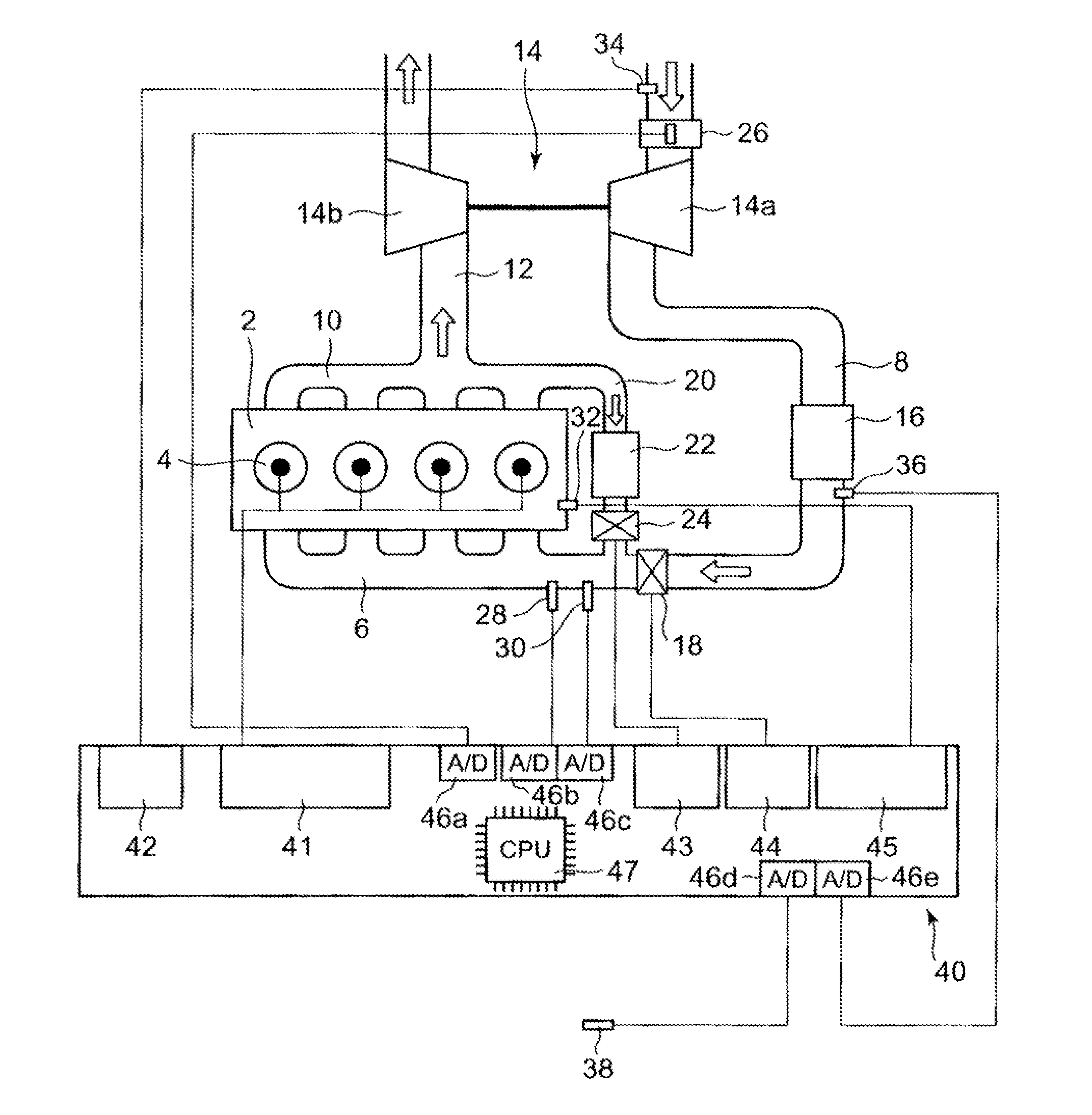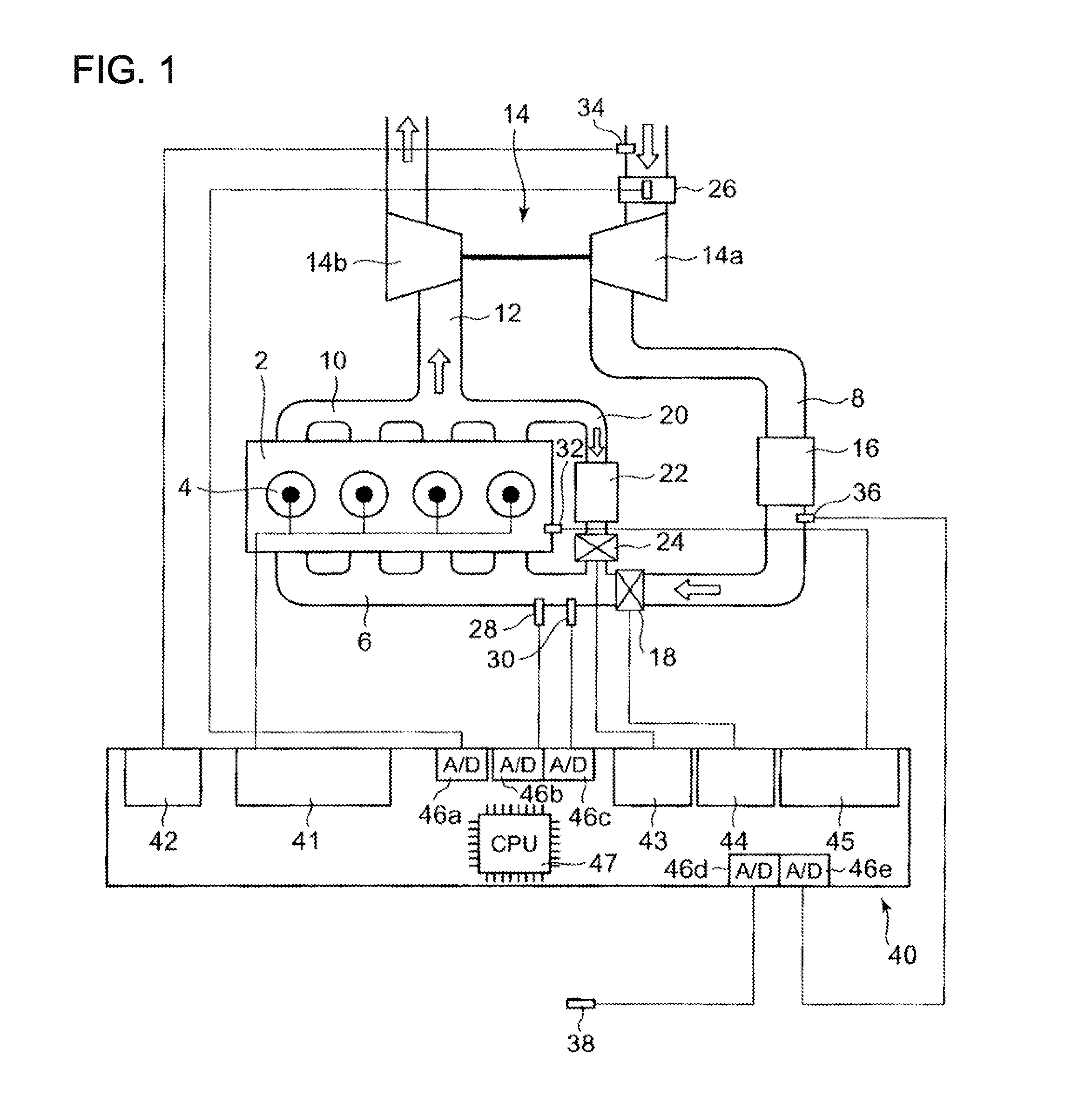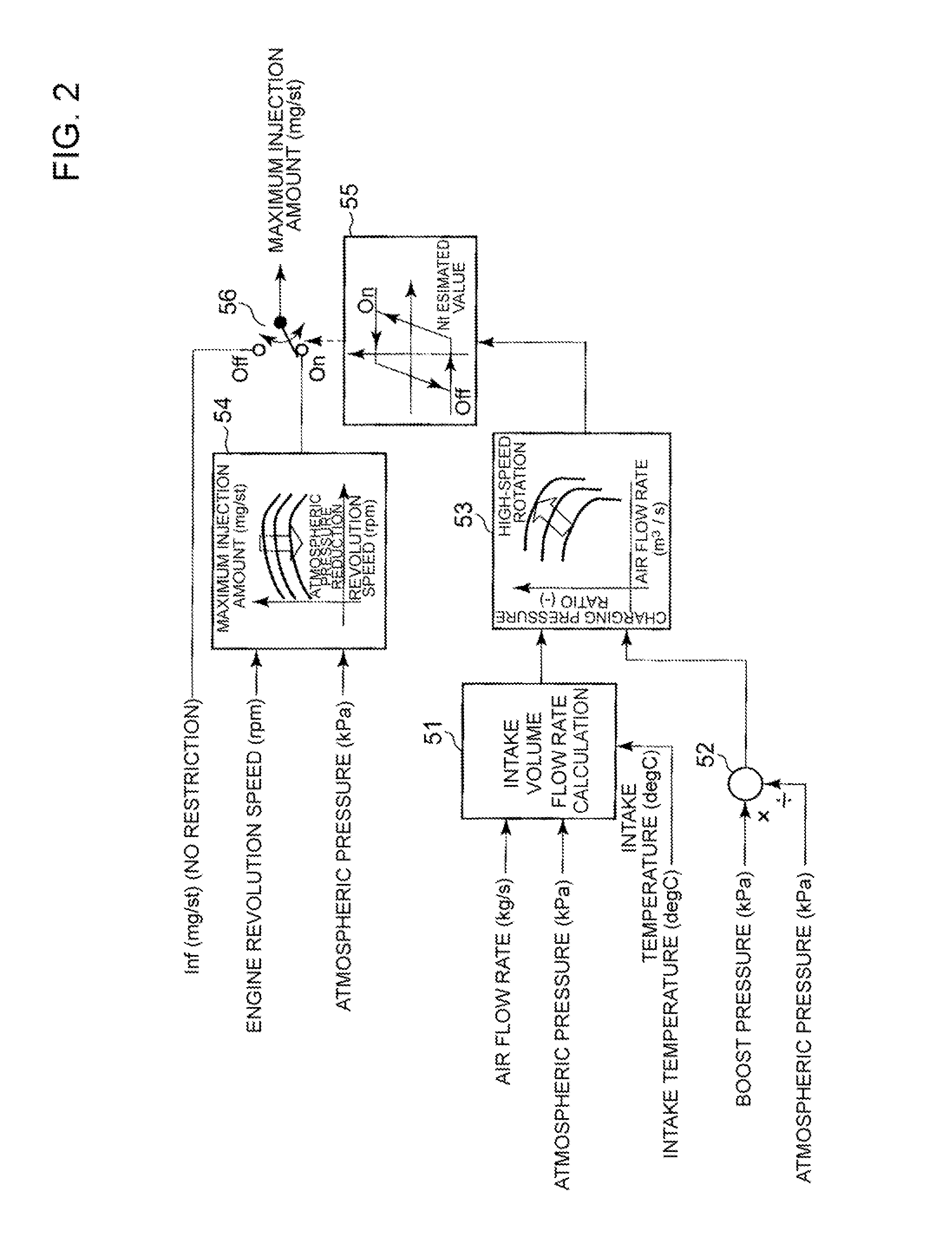Control device for turbocharged engine
a control device and turbocharger technology, applied in the direction of electrical control, process and machine control, instruments, etc., can solve the problems of excessive rise in the revolution speed of the turbine constituting the turbocharger, damage to the turbocharger, and increase in the revolution speed
- Summary
- Abstract
- Description
- Claims
- Application Information
AI Technical Summary
Benefits of technology
Problems solved by technology
Method used
Image
Examples
embodiment 1
[0045]FIG. 1 is a schematic diagram illustrating engine surroundings where the control device for a turbocharged engine according to Embodiment 1 is used. In FIG. 1, an engine 2 is a four-cycle diesel engine having four cylinders.
[0046]In the engine 2, intake passages 8 merge via an air supply manifold 6, and an exhaust passage 12 is connected to the engine by an exhaust manifold 10.
[0047]A compressor 14a of a turbocharger 14 is provided in the intake passage 8. The compressor 14a is driven coaxially with the below-described turbine 14b. An intercooler 16 performing heat exchange between the atmosphere and the supplied air flowing through the intake passage 8 is provided downstream of the compressor 14a in the intake passage 8. A throttle valve 18 that adjusts the flow rate of supplied air flowing through inside the intake passage 8 is provided downstream of the intercooler 16 in the intake passage 8.
[0048]An air flowmeter 26 that detects an intake flow rate and a temperature sensor...
embodiment 2
[0106]A schematic diagram illustrating the engine surrounding where the control device for a turbocharged engine of Embodiment 1 is used is similar to that shown in FIG. 1, which is explained in Embodiment 1. Therefore, FIG. 1 will be used and the explanation thereof will be omitted.
[0107]FIG. 6 is a drawing illustrating the control logic of fuel injection amount in Embodiment 2.
[0108]The reference numerals in FIG. 6 that are identical to those in FIG. 2 denote same operations and control and the explanation thereof is herein omitted.
[0109]In Embodiment 2, a method for estimating the turbine revolution speed is different from that of Embodiment 1.
[0110]The method for estimating the turbine revolution speed in Embodiment 2 will be explained below with reference to FIG. 6.
[0111]In the box represented by the reference numeral 61 in FIG. 6, the ECU 40 inputs the atmospheric pressure (kPa) detected by the pressure sensor 38 and the intake temperature (° C.) detected by the temperature se...
embodiment 3
[0116]FIG. 8 is a drawing illustrating the control logic of fuel injection amount in Embodiment 3.
[0117]The reference numerals in FIG. 8 that are identical to those in FIG. 2 denote same operations and control and the explanation thereof is herein omitted.
[0118]In Embodiment 3, the intake temperature (° C.) estimated from the air supply manifold temperature (° C.) can be used instead of the intake temperature (° C.) used when intake volume flow rate calculation 51 in Embodiment 1 is performed.
[0119]In FIG. 8, the ECU 40 passes the air supply manifold temperature (° C.) detected by the temperature sensor 28 through a low-pass filter 71 and finds the intake temperature (° C.) from the air supply manifold temperature (° C.) by using the map in the box 72. The low-pass filter 71 is used with the object of suppressing the effect of the operation pattern during transient operation on variations in the air supply manifold temperature.
[0120]FIG. 9 is a graph illustrating the relationship be...
PUM
 Login to View More
Login to View More Abstract
Description
Claims
Application Information
 Login to View More
Login to View More - R&D
- Intellectual Property
- Life Sciences
- Materials
- Tech Scout
- Unparalleled Data Quality
- Higher Quality Content
- 60% Fewer Hallucinations
Browse by: Latest US Patents, China's latest patents, Technical Efficacy Thesaurus, Application Domain, Technology Topic, Popular Technical Reports.
© 2025 PatSnap. All rights reserved.Legal|Privacy policy|Modern Slavery Act Transparency Statement|Sitemap|About US| Contact US: help@patsnap.com



